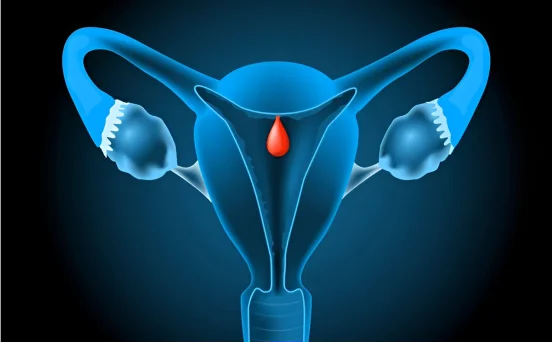Overactive bladder (OAB) is a common but often misunderstood condition that affects millions of people worldwide. Characterized by a sudden urge to urinate that’s difficult to control, OAB can significantly impact daily life, work, and social interactions. Many people feel embarrassed to discuss these symptoms, delaying diagnosis and treatment. However, understanding the symptoms of overactive bladder is the first step toward managing the condition effectively.
Understanding Overactive Bladder
Overactive bladder is a chronic condition involving the bladder’s storage function. It is defined by a group of urinary symptoms rather than a single identifiable cause. The bladder’s detrusor muscle (which controls urine release) contracts involuntarily, even when the bladder isn’t full, leading to sudden urges and frequent urination.
Unlike other urinary issues caused by infections or blockages, OAB is primarily related to nerve signals and muscle activity in the bladder. This makes symptom recognition especially important, as it can be easily confused with other urological conditions.
Most Common Symptoms of Overactive Bladder
- Urgency to Urinate :- The hallmark symptom of overactive bladder is a sudden, strong need to urinate. This urge often comes with little to no warning and may be difficult to delay. Many people describe it as an overwhelming feeling that they must rush to the restroom immediately. This urgency can occur even if the bladder isn’t full.
The frequency and intensity of this symptom can vary throughout the day and night. Some individuals may experience this a few times daily, while others feel it consistently.
- Urinary Frequency :- People with overactive bladder tend to urinate more often than the average person. Normal urinary frequency is about 6 to 8 times in 24 hours. With OAB, that number can rise to 10 or more times per day. It can even disrupt your schedule, making it difficult to sit through meetings, long drives, or social events without multiple restroom visits.
This frequent need to urinate is not always proportional to fluid intake. Even when water consumption is moderate, the bladder feels full too often due to overactive signals being sent to the brain.
- Nocturia (Frequent Nighttime Urination) :- Waking up more than once a night to urinate, known as nocturia, is another common symptom of overactive bladder. This not only disrupts sleep but can lead to fatigue, irritability, and reduced productivity during the day.
Nocturia is particularly bothersome for older adults, but it can affect people of any age. Repeated sleep interruptions can also contribute to mood swings, anxiety, and other health complications if left unmanaged.
- Urge Incontinence :- Urge incontinence refers to the involuntary leakage of urine following a strong, uncontrollable urge to urinate. This can happen when someone is on the way to the restroom or can’t make it in time. It’s not uncommon for individuals to lose small or large amounts of urine due to this symptom.
Although not everyone with OAB experiences urge incontinence, it is a distressing and often embarrassing symptom that can severely affect quality of life. Many people begin avoiding certain places or activities for fear of having an accident.
Secondary Effects of OAB Symptoms
The primary symptoms of overactive bladder may lead to several secondary effects that can have a broader impact on emotional and psychological well-being:
- Anxiety and Social Withdrawal :- Due to the unpredictability of symptoms like urgency and incontinence, individuals with OAB may avoid public places, events, or long trips. This social withdrawal can lead to feelings of isolation and anxiety. The constant fear of needing a bathroom can create stress in everyday situations.
- Sleep Disruption and Fatigue :- As mentioned earlier, nocturia can severely disrupt sleep. Poor sleep leads to daytime drowsiness, mood changes, and reduced concentration. Over time, chronic fatigue becomes a common concern for those with untreated OAB.
- Impact on Work and Relationships :- Frequent restroom breaks, accidents, or preoccupation with symptom management can affect work performance and productivity. In relationships, OAB can create strain due to embarrassment or a perceived lack of spontaneity in daily life.
How Symptoms May Vary Between Individuals
The experience of overactive bladder symptoms can differ from one person to another. Some may have all four symptomsurgency, frequency, nocturia, and urge incontinence while others may only have one or two.
-
Age :- OAB symptoms often worsen with age due to changes in bladder function and muscle tone.
-
Gender :- While both men and women can develop OAB, certain symptoms may be more prevalent in one gender. Women are more likely to experience urge incontinence, especially post-childbirth or post-menopause. In men, OAB symptoms may be confused with prostate issues.
-
Lifestyle :- Diet, stress levels, and hydration habits can influence the frequency and intensity of symptoms.
When to Seek Medical Help
Many people delay seeking help for overactive bladder due to embarrassment, normalization of symptoms, or confusion with other health issues. However, persistent urinary symptoms should never be ignored.
If you find yourself:
-
Planning your day around restroom availability,
-
Frequently waking up at night to urinate,
-
Experiencing accidental urine leakage,
-
Feeling anxious about public outings due to urgency,
It may be time to consult a healthcare provider. A proper diagnosis can rule out other possible causes such as urinary tract infections, diabetes, or bladder stones and allow for the right treatment plan to be developed.
Conclusion
Overactive bladder can disrupt your routine, affect your confidence, and impact your overall well-being. Recognizing the symptomsespecially urgency, frequency, nocturia, and urge incontinenceis the first step toward finding relief.
Although the condition can be frustrating, it’s also manageable. Lifestyle adjustments, behavioral therapies, medications, and in some cases, medical procedures can significantly reduce the severity of symptoms and restore quality of life.
By understanding and acknowledging these symptoms early on, individuals can take proactive steps toward effective management and regain control over their bladder and their lives.























